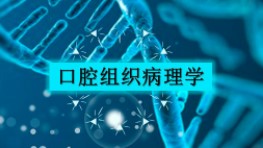
当前课程知识点:Overview of China > 第三章 理解中国 Understanding China > 3.3 中国经济 China's Economy > 3.3.1 中国古代农业和手工业 Ancient Chinese agriculture and handicraft industry
返回《Overview of China》慕课在线视频课程列表
朋友 您好 欢迎您 走进中国
Hello! Welcome to Overview of China
了解更多关于中国的知识
to know more about China.
今天 我们一起来学习中国的经济
Today, we are going to learn about China's economy.
中国经济分为古代经济和现代经济两个部分
China’s economy is divided into two parts: ancient economy and modern economy.
中国古代经济经历了漫长的发展过程
After a long process of development, the economy of ancient China
在农业 手工业和商业方面 取得了举世瞩目的成就
in agriculture, handicraft industry and commerce has made great remarkable achievement.
18世纪以前一直处于世界领先地位
China has been the world leader until the 18th century.
但是随着19世纪西方世界的崛起
However, with the rise of the western world in the 19th century,
中国经济独立发展的过程被打破了
China's process of independent economic development was broken
逐渐落后于西方世界
and gradually fell behind the western world.
下面 我们就一起来看一下中国古代经济
Now, let's take a look at the ancient China’s economy.
中国古代经济主要体现在高度发达的农业
The ancient China’s economy was mainly reflected in highly developed agriculture,
技术先进的手工业和繁荣一时的商业
technologically advanced handicraft industry and flourishing commerce.
由于历代统治者以农为本 重农抑商
As the feudal rulers of the past dynasties were agriculture-oriented and suppressed commerce.
商品经济发展受到了抑制
the development of commodity economy was restrained,
在本质上仍是自给自足的自然经济
so it was still a self-sufficient natural economy in essence.
古代农业
Ancient agriculture
中国是农业大国
China is a big agricultural country,
农业生产具有悠久的历史
has a long history in agricultural production.
大约一万年前
About 10,000 years ago,
中国出现了世界上最早的人工栽培农作物
the world's first artificially cultivated crops appeared in China.
长江中下游的先民开始栽培水稻
The ancestors in the middle and lower reaches of the Yangtze river began to cultivate rice,
北方的先民开始栽培粟
and the ancestors in the north began to cultivate millet,
形成了南稻北粟的农作物种植格局
forming the crop planting pattern of southern rice and northern millet.
早期农业生产方式经历了
The early agricultural production mode experienced three stages
从刀耕火种 石器锄耕到铁犁牛耕的三个阶段
which is : from slash-and-burn tillage to stone-hoe tillage to iron-plough cattle tillage.
耕作方式经历了从集体劳作到个体生产的变化
Farming methods changed from collective work to individual production.
以家庭为单位的 男耕女织
Taking family as unit, "male plowing and female weaving"
是中国古代农业生产的基本模式
is the basic mode of agricultural production in ancient China,
精耕细作则是中国传统农业的主要特点
while intensive farming is the main characteristic of traditional Chinese agriculture.
灌溉是古代农业耕作中最重要的一个环节
Irrigation is the most important link in ancient agriculture,
因此古人非常重视兴修水利
so ancient people attach great importance to the construction of water conservancy,
著名的有战国时期的都江堰 郑国渠
such as the famous Dujiangyan canal , the Zhengguo canal, in the Warring states period
秦朝开凿的灵渠等
and the Lingqu canal in the Qin dynasty.
另外 还发明了提水灌溉的工具
In addition, tools for carrying water for irrigation were invented,
翻车 筒车和桔槔等
such as turning over cars, rolling wheels, and well-douf.
西汉的耧车 唐代曲辕犁
An animal drawn seed plough of western Han dynasty, curved iron plough in Tang dynasty,
宋代的秧马等
Song dynasty seedling horses, etc.,
都大大提高了农业生产效率
greatly improving the efficiency of agricultural production.
由于农业技术的发明和应用
Thanks to the invention and application of agricultural technology,
到13世纪为止
By the 13th century.
中国农业都是世界上最为精细和生产力最高的
China's agriculture was the most sophisticated and productive in the world.
古代手工业
Ancient handicraft industry
中国古代手工业历史悠久
China's ancient handicraft industry has a long history,
技术高超 工艺精湛 长期居于世界前列
superb technology, exquisite workmanship, been in the forefront of the world for a long time.
春秋战国时期
During the Spring and Autumn Period and The Warring States,
随着土地私有化和小农经济的出现
with the privatization of land and the emergence of small-scale peasant economy,
逐渐形成了实力雄厚 产品精良的官营手工业
he government handicraft industry with abundant strength and exquisite products
和满足广大人民生活需要的民间手工业两者并存的局面
and the folk handicraft industry to meet the living needs of the general public came into being.
从汉武帝时代起
From the time of emperor Wudi of the Han dynasty,
煮盐 冶铁 铸钱 炼铜 等
the most profitable industries, such as salt boiling, iron smelting, coin casting and copper smelting,
最有利可图的行业 都被政府垄断
were monopolized by the government.
官营手工业由政府统一管理
The government-run handicraft industry is under the unified management of the government,
所以具有规模大 分工细 组织严密
so it has the characteristics of large scale, fine division of labor, close organization,
管理完善 不计成本 不入市场等特点
perfect management, regardless of cost and do not go to the market.
官营手工业的冶金 纺织和陶瓷等产品
The metallurgical, textile and ceramic products of the official handicraft industry
主要供应给皇室 贵族和军队使用
were mainly supplied to the royal family, nobles and the military,
代表了当时手工业的最高成就
which represented the highest achievement of the handicraft industry at that time.
在青铜器制作方面
In the aspect of bronze ware making,
出土的先秦时期的青铜器皿制作精美
the unearthed bronze vessels of the pre-qin period are exquisitely made,
构造复杂 技术精湛
complex in structure and exquisite in technology,
是古代官营手工业发达的重要体现
which is an important reflection of the developed handicraft industry of the ancient government.
在冶铁炼钢方面
In iron smelting and steel making,
南北朝时期出现了古代最先进的灌钢冶铁法
the most advanced casting and smelting method appeared in the southern and northern dynasties.
随着青铜冶炼技术不断提高
With the continuous improvement of bronze smelting technology,
青铜器和铁器得到广泛应用
bronze ware and iron ware were widely used,
生产率得以不断提高
and the productivity was constantly improved,
促进了社会的生产发展和经济繁荣
which promoted the production development and economic prosperity of the society.
民间手工业包括民营手工业和家庭手工业
The folk handicraft industry includes the private handicraft industry and the domestic handicraft industry,
主要分布在制瓷 纺织等领域
mainly distributes in the manufacture porcelain, the textile and so on.-
中国是世界上最早烧制出瓷器的国家
China is the first country in the world to make porcelain,
被称为 China
known as China,
因此瓷器就成了中华文明的象征
so porcelain has become the symbol of Chinese civilization.
中晚唐开始
From the middle and late Tang dynasty,
瓷器生产从自给自足转向外销
porcelain production shifted from self-sufficiency to export,
远达非洲和欧洲
reaching as far as Africa and Europe.
因大多走海路
Because most of the porcelain production took the sea route,
所以 海上丝绸之路 有时也被称为 瓷器之路
the "maritime silk road" was sometimes called the "porcelain road".
唐代 形成了 南青北白 两大制瓷系统
In the Tang dynasty, two major porcelain systems were formed: "south, green, north , white".
宋代出现了汝窑 官窑 哥窑 钧窑和定窑五大名窑
Five famous kilns appeared in the song dynasty, namely Ru kiln, Guan kiln, Ge kiln, Jun kiln and Ding kiln.
制瓷业高度发展
The porcelain industry was highly developed.
南方以江西景德镇为代表
Jingdezhen in Jiangxi province was the representative of the south.
景德镇瓷窑
Jingdezhen porcelain kiln, in the Yuan dynasty
在元代烧制出白地蓝花的青花瓷器
fired out blue-and-white porcelain which is white with blue flower on it,
成为瓷器的代表
become the representative of porcelain;
明中后期
In the middle and late Ming dynasty,
烧制出多种彩瓷
a variety of color porcelain was fired.
清代又发明了珐琅彩 色彩鲜艳 如同油画
Qing dynasty also invented enamel color, bright colors, like oil painting.
中国是世界上最早开始养蚕 缫丝和织绸的国家
China is the first country in the world to start sericulture, silk reeling and silk weaving.
西汉时期
In the western Han dynasty,
丝绸经由丝绸之路远销亚洲 欧洲
silk was exported to Asia and Europe via the silk road
为中国赢得 丝国 的美称
and won the reputation of "silk country" for China.
在棉纺织方面
In the field of cotton weaving,
元代的黄道婆发明了提花机
the Huangdaopo of the Yuan dynasty invented jacquard machine,
可以织出美丽的花布
which could weave beautiful cloth.
棉布已成为民众的主要衣料
Cotton cloth has become the main material for the people.
明朝中后期
In the middle and late Ming dynasty,
江南地区纺织业高度发达
the textile industry in jiangnan region was highly developed,
出现了资本主义萌芽
and capitalism appeared.
好 关于中国古代经济的农业和手工业
OK! So much for agriculture and handicraft
我们就讲到这里 谢谢
in ancient China’seconomy. Thank you!
-1.1 初识中国 First acquaintance of China
--1.1 初识中国 First acquaintance of China
-1.2 人文中国 Humanistic China
-1.3 美丽中国 Beautiful China
-1.4 绿色中国 Green China
-1.5 民俗中国 Folklore China
-小测验 Quiz
-2.1 畅行中国 Unimpeded China
--2.1.1 中国交通方式 China's mode of transportation
--2.1.2 中国著名人文景观 Famous cultural landscape in China
--2.1.3 中国著名自然景观 Famous natural landscape in China
-2.2 乐居中国 Happy living in China
--2.2.1 中国传统官式建筑 Traditional Chinese official architecture
--2.2.2 中国传统民居 Traditional Chinese houses
--2.2.3 中国现代城镇的发展 The development of modern towns in China
-2.3 食在中国 Eating in China
-2.4 穿在中国 Wear in China
-2.5 医在中国 Medicine in China
-小测验 Quiz
-3.1 中国历史 Chinese History
--3.1.1.走向大一统的中华文明 Towards the unification of Chinese civilization
--3.1.2 多民族融合的封建帝国 A multi-ethnic feudal empire
--3.1.3 日新月异的和平中国 Peaceful China changing with each passing day
--小测验 Quiz
-3.2 中国科技 China‘s Science and Technology
--3.2.1 中国古代四大发明 Four great inventions in ancient China
--3.2.2 中国古代数学和天文学 Ancient Chinese mathematical astronomy
--3.2.3 古代青铜器和农业科技 Ancient bronzes and agricultural technology
--3.2.4 中国新四大发明 Four new inventions in China
--3.2.5 国防与民生科技 National defense and people's Livelihood Science and technology
--3.2.6 中国航空航天 China Aerospace
--小测验Quiz
-3.3 中国经济 China's Economy
--3.3.1 中国古代农业和手工业 Ancient Chinese agriculture and handicraft industry
--3.3.2 中国古代商业 Ancient Chinese Commerce
--3.3.3 中国现代经济政策和体制 China's modern economic policy and system
--3.3.4 中国经济发展的成就 Achievements in China's economic development
--3.3.5 中国经济发展的新趋势 The new trend of China's economic development
--小测验Quiz
-3.4 中国教育 Education in China
--3.4.1 古代哲学和教育思想 Ancient philosophy and educational thought
--3.4.2 古代学校教育 Ancient school education
--3.4.3 科举制度 Imperial examination system
--3.4.4 扫盲运动与高考 Literacy campaign and college entrance examination
--3.4.5 中国现代教育体系 China's modern education system
--3.4.6 国际教育交流与合作 International educational exchange and cooperation
--小测验Quiz
-4.1 文学欣赏 Literary Appreciation
--4.1.1 《诗经》和《离骚》Book of Songs and Li Sao
--4.1.2 诸子散文 Philosophical Prose
--4.1.3 唐诗宋词 Chinese Tangsong Poetics
--4.1.4 四大名著 Four Masterpieces
--4.1.5 中国现代文学 Modern Chinese Literature
--4.1.6 中国当代文学 Contemporary Chinese Literature
--小测验 Quiz
-4.2 音乐欣赏 Music Appreciation
--4.2.1 中国传统音乐与乐器 Traditional Chinese Music and Musical Instruments
--4.2.2 中国古典十大名曲 Ten Famous Classical Chinese Songs
--4.2.3 五彩缤纷的现代音乐 Colorful Modern Music
--小测验 Quiz
-4.3 戏曲欣赏 Opera Appreciation
--4.3.2 豫剧和其他地方戏 Henan Opera and Other Local Operas
--4.3.3 皮影戏和样板戏 Shadow Play and Model Play
--小测验 Quiz
-4.4 书画欣赏 Appreciation of Painting and Calligraphy
--4.4.1 文房四宝及书体 Four Treasures of Study and Calligraphy Style
--4.4.2 书法艺术习成及名家名作 Calligraphy and Masterpieces
--4.4.3 中国画的工具及分类 Tools and Classification of Chinese Painting
--4.4.4 中国绘画名家名作 Famous Works of Chinese Painters
--4.4.5 中国书画艺术思想 The artistic Thought of Chinese Painting and Calligraphy
--小测验 Quiz
-4.5 影视欣赏 Film Appreciation
--4.5.3 20世纪90年代至今中国电影欣赏 Chinese film appreciation since 1990s
--小测验 Quiz
-4.6 武术欣赏 Chinese Martial Arts Appreciation
--4.6.1 中国武术的源流与发展 The Origin and Development of Chinese Martial Arts
--4.6.2 中国武术流派 Chinese Martial Arts schools
--4.6.3 十八般武器 18 Weapons of Martial Arts
--4.6.4 中国武术文化欣赏 Appreciation of Chinese Martial Arts Culture
--小测验 Quiz
-5.1 源远流长的古代中外交流 Ancient exchanges between China and foreign countries
--5.1源远流长的古代中外交流 Ancient exchanges between China and foreign countries
-5.2 丰富多彩的现代中外交流 Rich and colorful modern exchanges between China and foreign countries
--5.2 丰富多彩的现代中外交流 Rich and colorful modern exchanges between China and foreign countries
-小测验 Quiz
-期末考试 Final Examination
--期末考试 Final Examination

